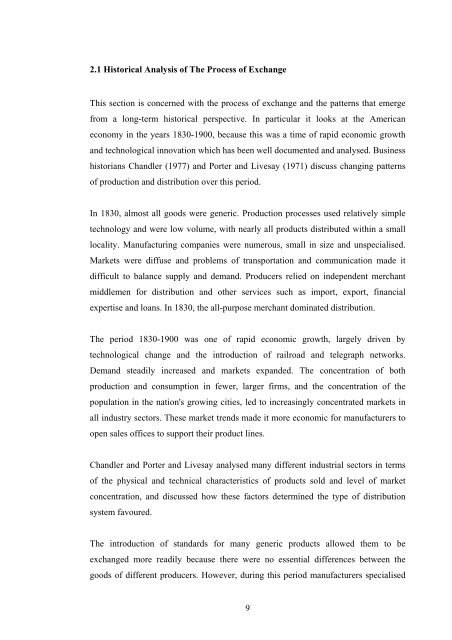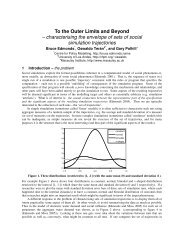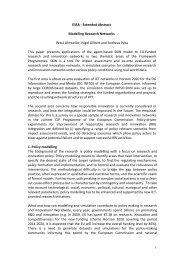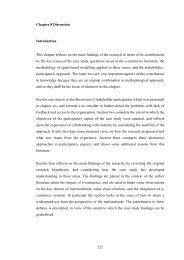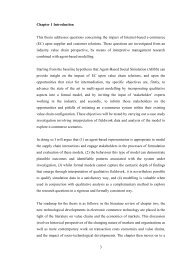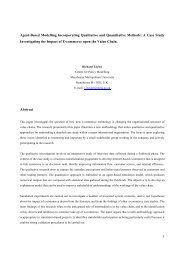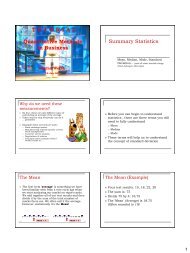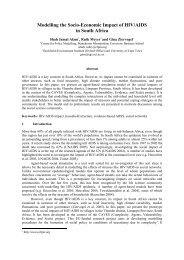7 Chapter 2 Literature Review: Markets, Intermediation and E ...
7 Chapter 2 Literature Review: Markets, Intermediation and E ...
7 Chapter 2 Literature Review: Markets, Intermediation and E ...
Create successful ePaper yourself
Turn your PDF publications into a flip-book with our unique Google optimized e-Paper software.
2.1 Historical Analysis of The Process of Exchange<br />
This section is concerned with the process of exchange <strong>and</strong> the patterns that emerge<br />
from a long-term historical perspective. In particular it looks at the American<br />
economy in the years 1830-1900, because this was a time of rapid economic growth<br />
<strong>and</strong> technological innovation which has been well documented <strong>and</strong> analysed. Business<br />
historians Ch<strong>and</strong>ler (1977) <strong>and</strong> Porter <strong>and</strong> Livesay (1971) discuss changing patterns<br />
of production <strong>and</strong> distribution over this period.<br />
In 1830, almost all goods were generic. Production processes used relatively simple<br />
technology <strong>and</strong> were low volume, with nearly all products distributed within a small<br />
locality. Manufacturing companies were numerous, small in size <strong>and</strong> unspecialised.<br />
<strong>Markets</strong> were diffuse <strong>and</strong> problems of transportation <strong>and</strong> communication made it<br />
difficult to balance supply <strong>and</strong> dem<strong>and</strong>. Producers relied on independent merchant<br />
middlemen for distribution <strong>and</strong> other services such as import, export, financial<br />
expertise <strong>and</strong> loans. In 1830, the all-purpose merchant dominated distribution.<br />
The period 1830-1900 was one of rapid economic growth, largely driven by<br />
technological change <strong>and</strong> the introduction of railroad <strong>and</strong> telegraph networks.<br />
Dem<strong>and</strong> steadily increased <strong>and</strong> markets exp<strong>and</strong>ed. The concentration of both<br />
production <strong>and</strong> consumption in fewer, larger firms, <strong>and</strong> the concentration of the<br />
population in the nation's growing cities, led to increasingly concentrated markets in<br />
all industry sectors. These market trends made it more economic for manufacturers to<br />
open sales offices to support their product lines.<br />
Ch<strong>and</strong>ler <strong>and</strong> Porter <strong>and</strong> Livesay analysed many different industrial sectors in terms<br />
of the physical <strong>and</strong> technical characteristics of products sold <strong>and</strong> level of market<br />
concentration, <strong>and</strong> discussed how these factors determined the type of distribution<br />
system favoured.<br />
The introduction of st<strong>and</strong>ards for many generic products allowed them to be<br />
exchanged more readily because there were no essential differences between the<br />
goods of different producers. However, during this period manufacturers specialised<br />
9


